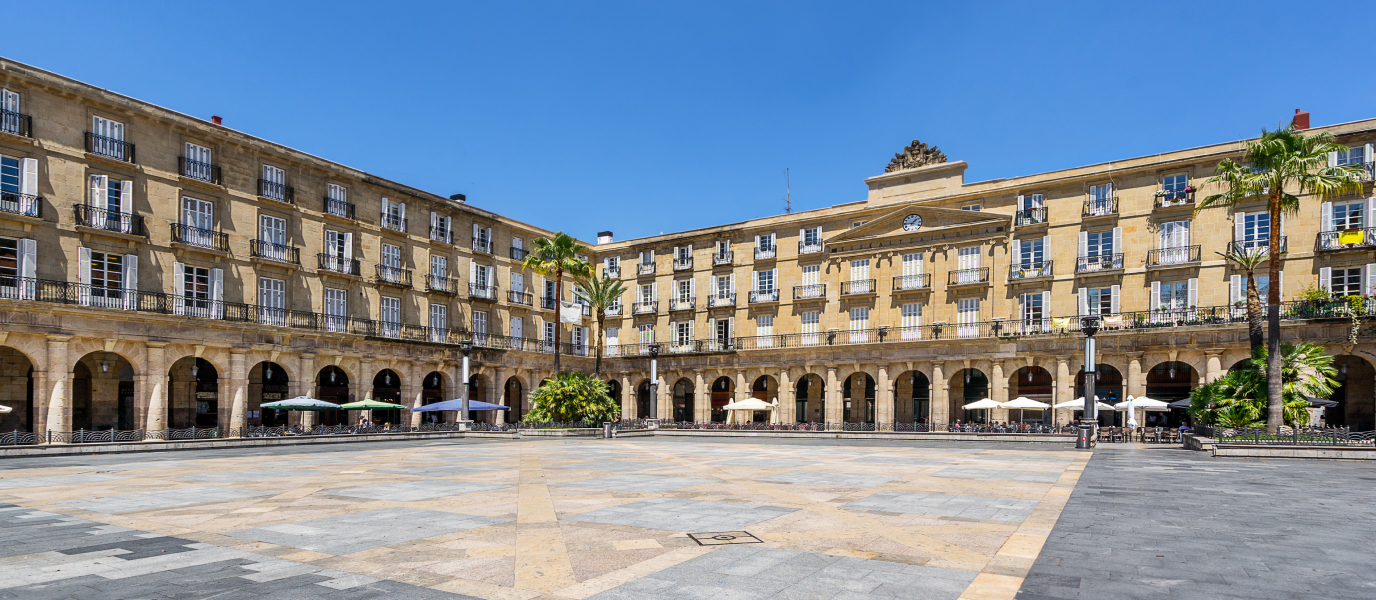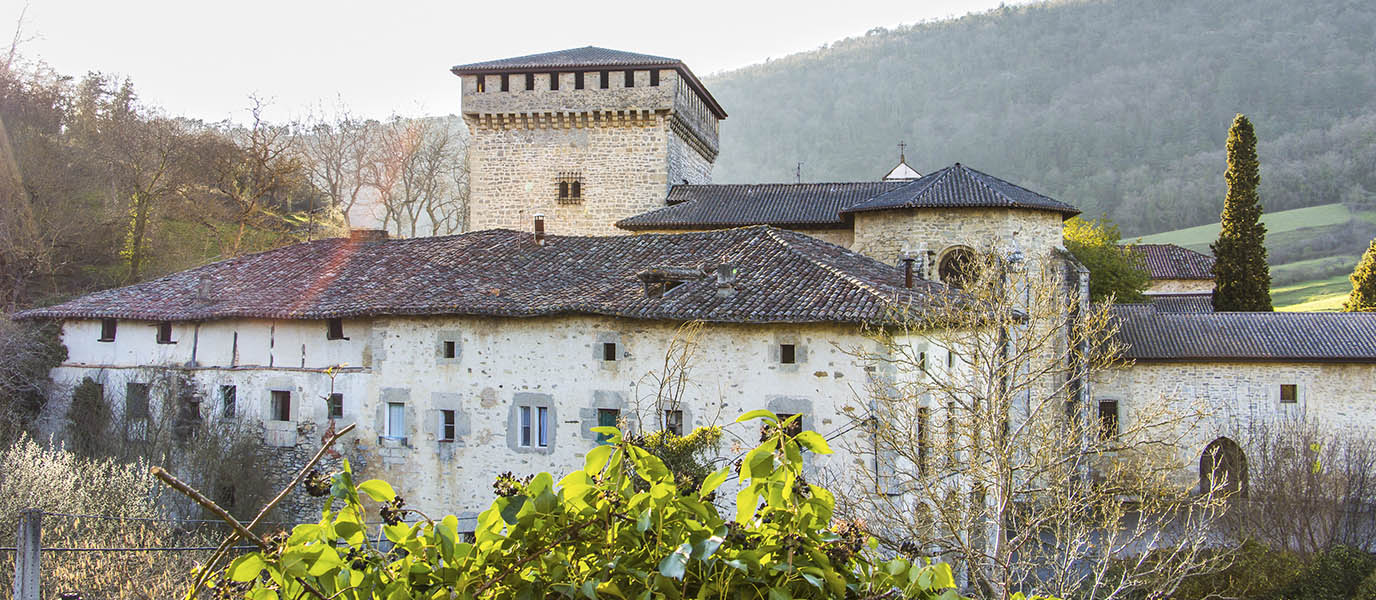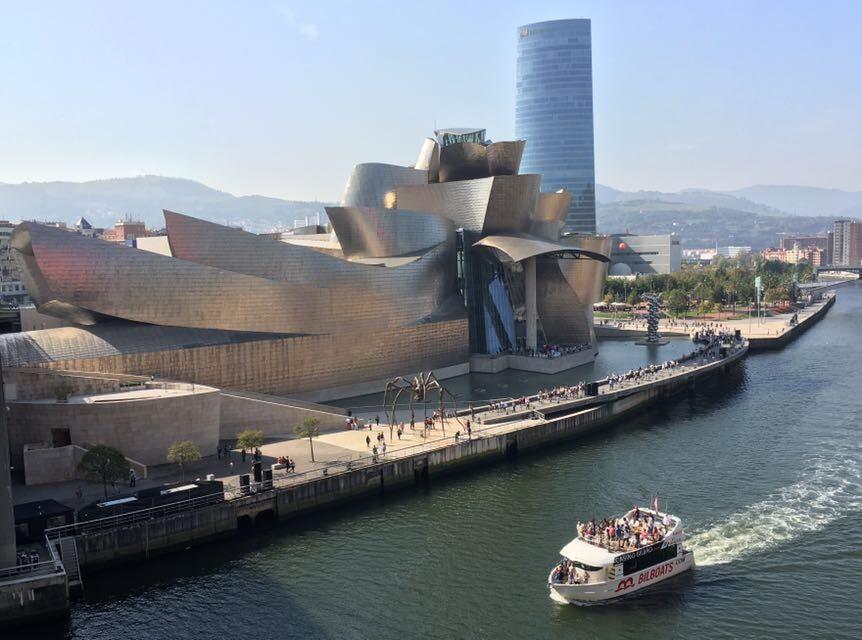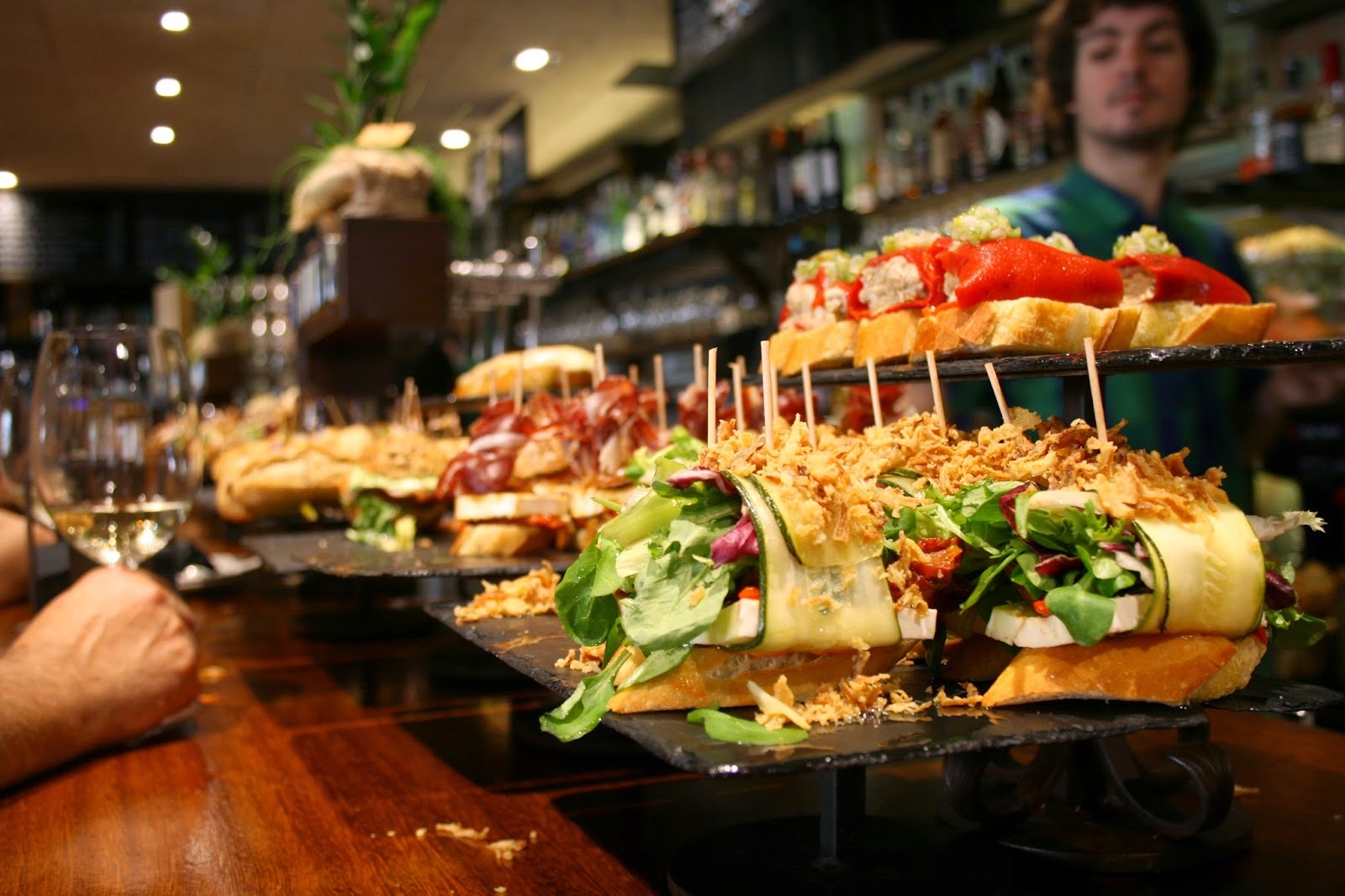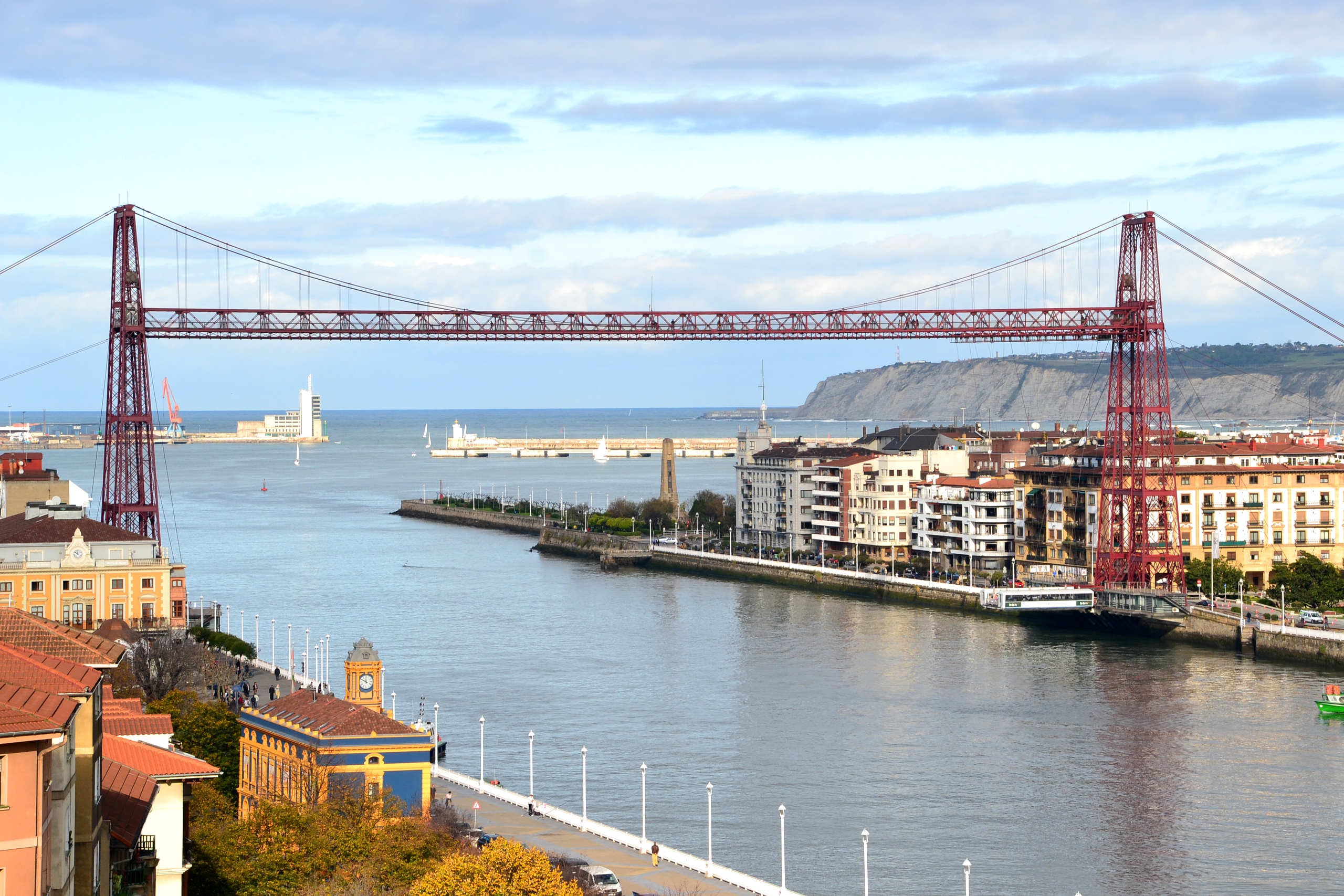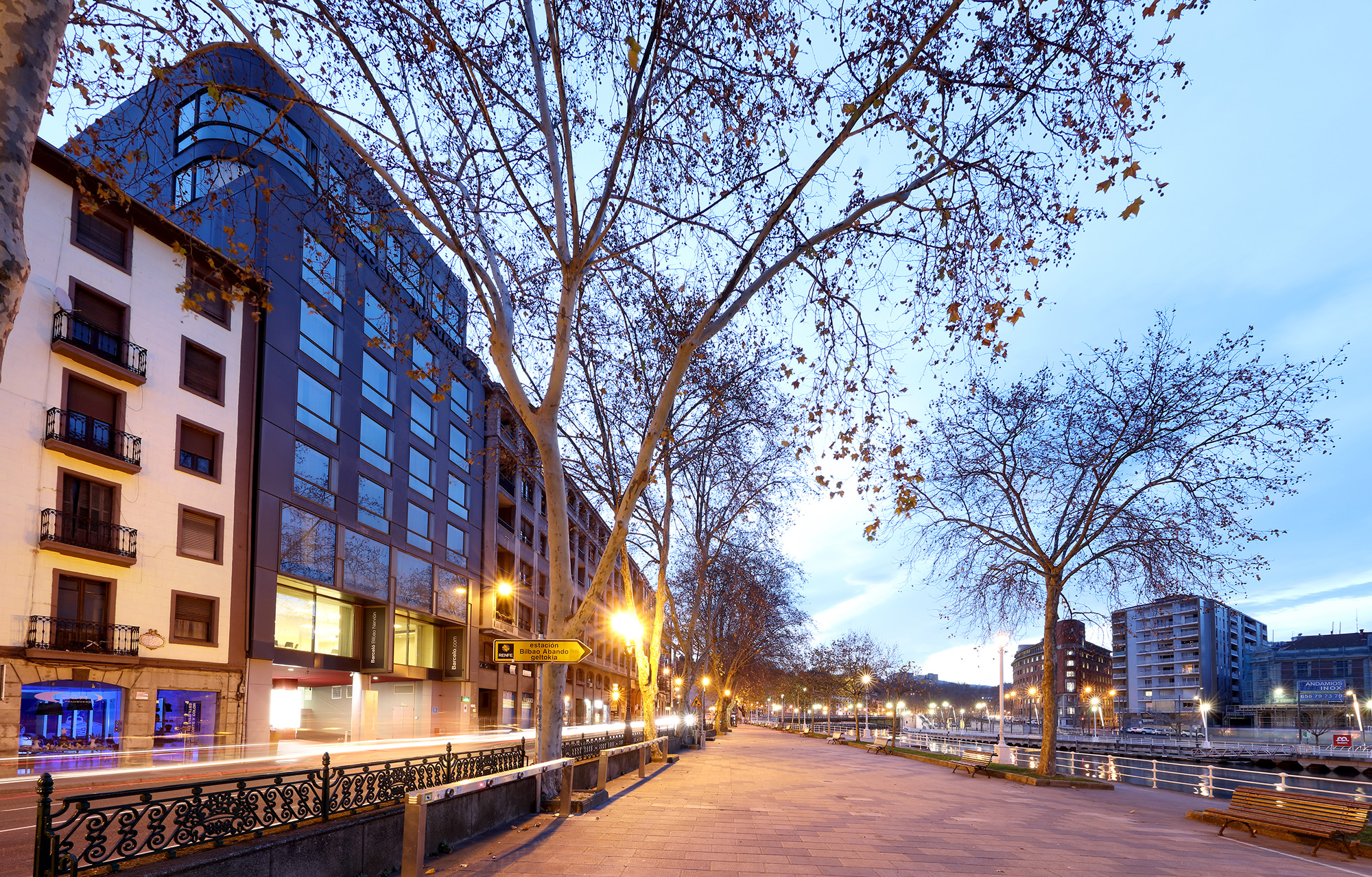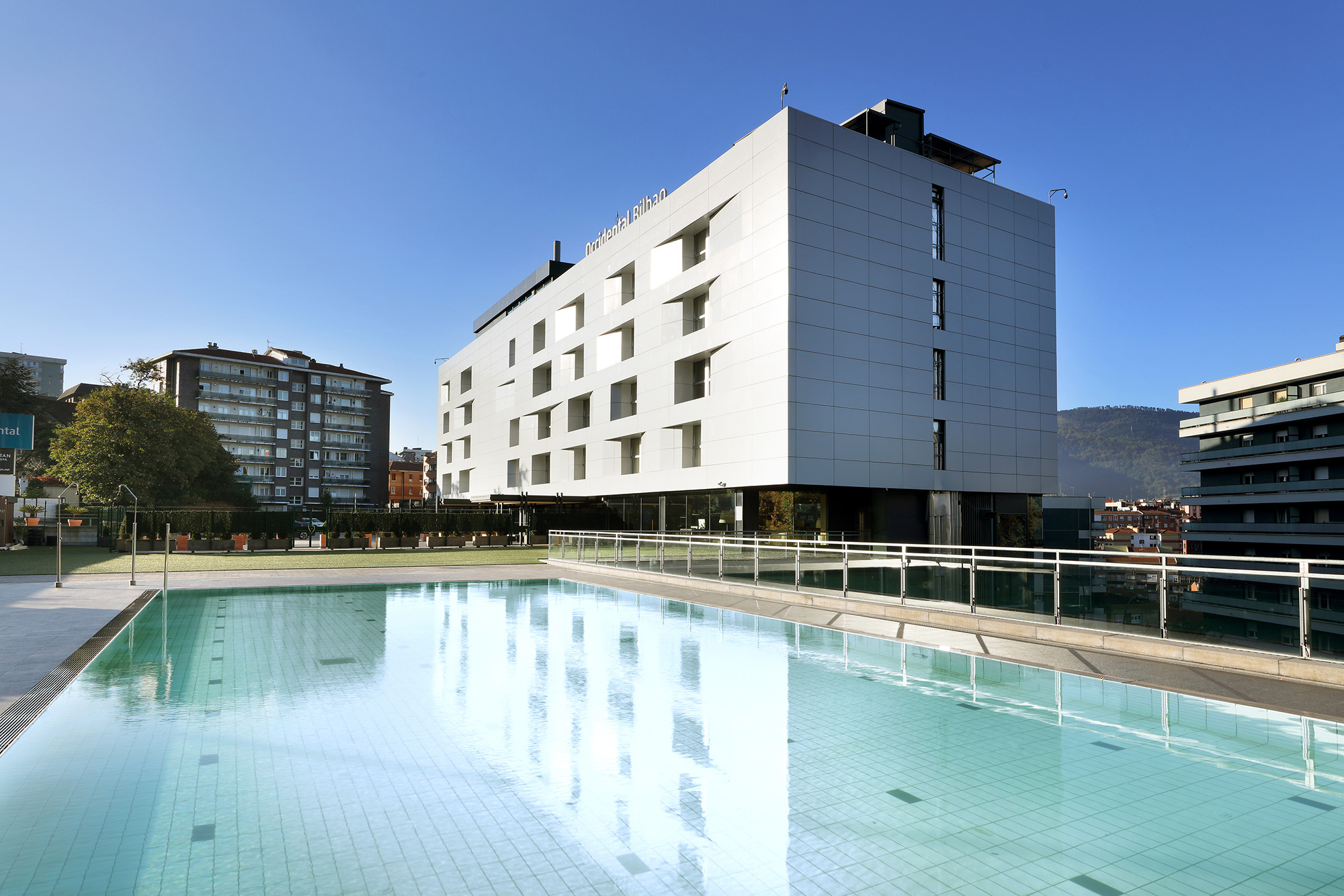Ever since King Fernando VII of Spain laid its first stone, Bilbao’s Plaza Nueva (or Plaza Berria in Basque) has never ceased to make history. Situated in the very heart of the Casco Viejo quarter, it was once an expanse of marshland and an important link between the town and the fishing neighbourhood of San Nicolás. Through this square ran the young Miguel de Unamuno, and it was also the birthplace of the famous painter Manuel Losada, who would later depict it during the Venetian celebrations that took place in 1872 owning to the visit of King Amadeo I of the House of Savoy to the city. Ever since it was constructed, Plaza Nueva—which translates as New Square—has never lost its special status as a witness to the city’s social and commercial activity. It is for this reason that it is not uncommon to see large groups of friends enjoying each other’s company in its many bars and restaurants, along with good wine and an abundance of pintxos.
The new square that was once old
The point at which Ribera Market, Achuri station and the Church of San Antón converge was once the site of a square commonly known as Plaza Vieja (Spanish for Old Square). The city’s intellectual pretensions during the eighteenth century prompted the decision to create a new focal point for the social and commercial life of the city. Although there are official records of plans to build a new square dating from 1786, it wasn’t until 1828 when the plan was finally set in motion.
It is widely known that the support of King Fernando VII for the project was the perfect antidote to pressure from Bilbao’s landlords who, fearful of a possible fall in house prices, had misgivings about the construction of the square. Unfortunately for the monarch, his death in 1833, along with the antipathy that prevailed in liberal Bilbao at the time, scuppered plans for his statue to be built in the centre of the square. Instead, a pond took centre stage until 1890, followed by a statue of Bilbao’s founder, Diego López de Haro, and later a bandstand, which competed with the one in Arenal Gardens until the beginning of the last century.
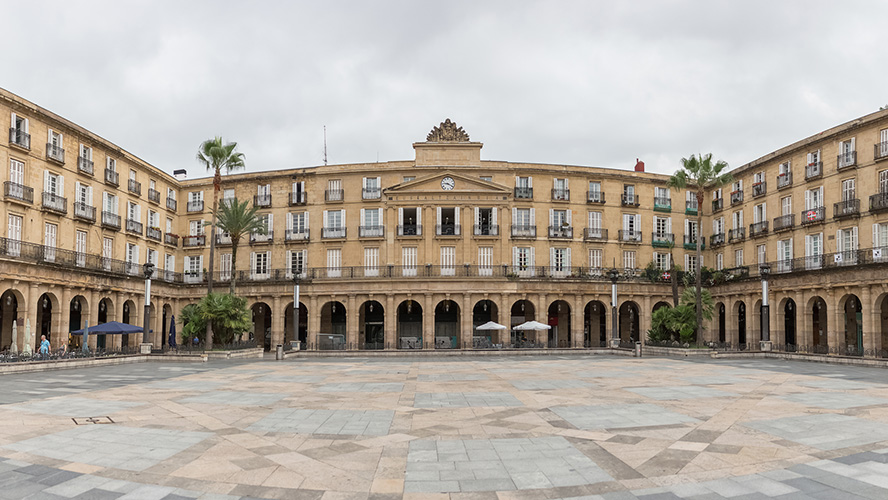
Today the square is surrounded by the streets of Calle Askao, Calle Sombrerería, Calle de Los Fueros and Calle del Correo, which is where the main entrance and the most recent, in terms of all five, stands. Its origins date back to the bombing that Bilbao suffered during the Civil War, which quite literally opened up a gateway into the plaza. Changes were also made to the square’s name during the Franco era. Even though it had maintained the name Plaza Nueva up until then, from 1939 to 1980 it was officially known as Plaza de los Mártires. However, with the onset of democracy it regained its original name, demonstrating that it had never been known as anything else for the people of Bilbao.
Regocijos Bilbaínos on Plaza Nueva
In the annals of Bilbao’s history, one of the most madcap events to have occurred seems to have taken place on Plaza Nueva. In 1872, the Italian King Amadeo I from the House of Savoy, then King of Spain, visited the traditional Bilbao festivities—known as Regocijos. In preparation for his visit the people of Bilbao decided to pay tribute to him by organising an authentic Venetian celebration. By taking advantage of the marshy land on which it stood, the square was flooded with water and a series of gondolas captained by local residents dressed up as Venetians were set sail. To encourage popular participation a great prize was awarded to the most beautiful gondola.
Another curious story goes that on the days of the Regocijos, the spouts of the old pond that used to stand in the middle of the square spurted red wine instead of water.
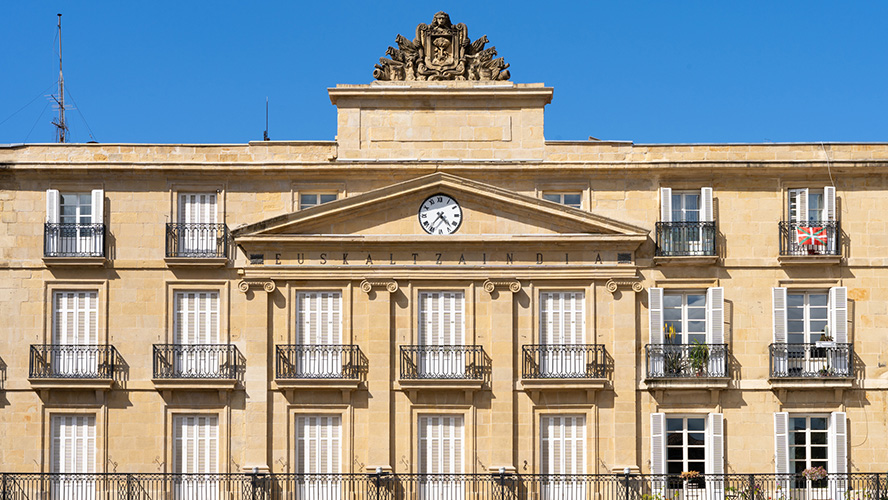
The Plaza Nueva of today
Although Plaza Nueva—a veritable example of neoclassical architecture—used to be formed of symmetrical gardens filled with acacias and magnolia trees, construction of the current underground car park in 1966 saw it replaced by bare cobblestones.
On one side, atop of the colonnades, a clock and the emblem of the Lord of Biscay presides over the façade, vestiges of the Regional Government of Biscay, which once based on Plaza Nueva until the building was ceded to Banco de Bilbao in 1900 and later the Royal Academy of the Basque Language.
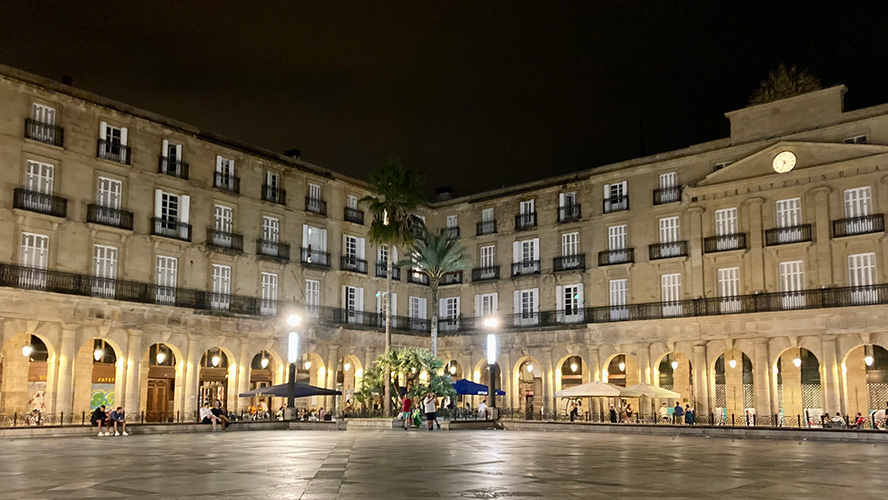
Nonetheless, the protagonists of the square are, without a doubt, the many cafes and restaurants that line it, both under its covered walkways and in the surrounding area. Restaurante La Olla, famous for its tortilla pintxos with a great variety of fillings; Café Bilbao, with its baby squid and calamari; or the nearby Bar Sorginzulo, give us a small insight into the food on offer in the area.
If you can, a visit to the square on a Sunday is a must, as for many years now it transforms into a flea market, much like El Rastro in Madrid, where you can buy, sell or exchange second hand books and records, coins and stamps, stones and all manner of collectable items.




































































